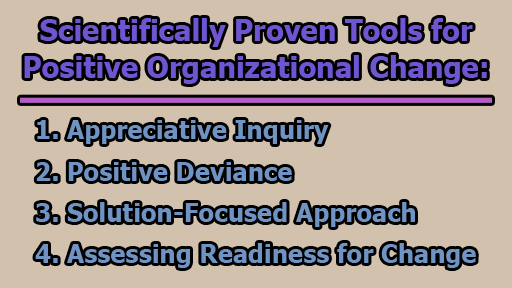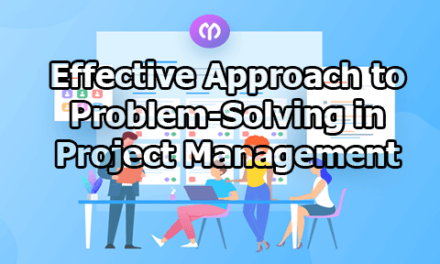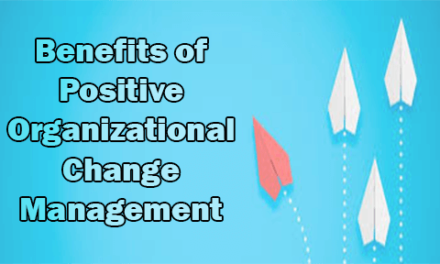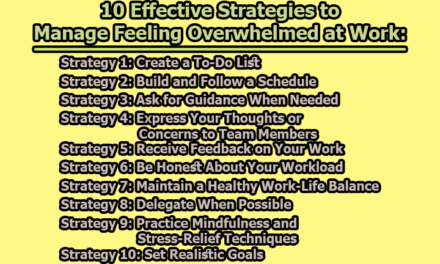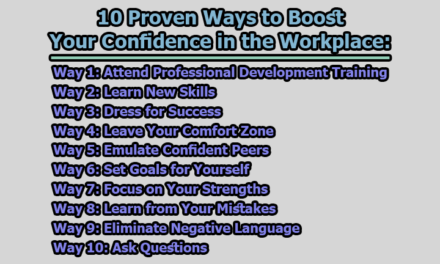Scientifically Proven Tools for Positive Organizational Change:
Positive organizational change is a dynamic and essential aspect of fostering growth and adaptability in today’s fast-paced business environment. Transformations that are continuous and purposeful contribute to the development of resilient and successful organizations (Abudi, 2017). To facilitate this journey, organizations can leverage scientifically proven tools that promote positivity, engagement, and effective change management. In this article, we will explore four scientifically proven tools for positive organizational change.
1. Appreciative Inquiry: Appreciative Inquiry is a powerful methodology for positive organizational change that emphasizes focusing on the positive aspects of an organization, rather than dwelling on problems or challenges (Hammond, 2013). This approach encourages individuals to appreciate and build upon the strengths and successes that already exist within the organization. The process involves a series of reflective questions to guide individuals and teams toward a constructive exploration of their collective experiences and aspirations.
Key Components of Appreciative Inquiry:
- Identification of Positive Aspects: Appreciative Inquiry begins by identifying and acknowledging the positive elements within the organization. This can include recognizing successful projects, exceptional teamwork, or instances where the organization excelled. By highlighting these positive aspects, the approach aims to create a foundation for future positive change.
- Reflective Questions: Central to Appreciative Inquiry are a set of reflective questions that guide individuals and teams in exploring their positive experiences. Questions such as “What led us to this point?” and “What are the high points of our past?” prompt participants to reflect on moments of success, collaboration, and achievement. This process helps shift the focus from problem-solving to building upon existing strengths.
- Values and Vision Exploration: Appreciative Inquiry goes beyond assessing the current state of the organization; it also delves into the values and vision that drive its success. Questions like “What do we value as an organization?” and “What’s the best future we can imagine?” encourage participants to articulate their shared values and envision a positive future. This vision becomes a guiding force for change initiatives.
- Co-Creation of Solutions: Once the positive aspects, values, and vision are identified, Appreciative Inquiry involves collaboratively designing solutions that align with the organization’s strengths and aspirations. By involving individuals in the process of co-creating solutions, it fosters a sense of ownership and commitment to the proposed changes.
- Implementation and Continuous Improvement: The final step involves implementing the identified solutions and continuously refining them based on feedback and results. Appreciative Inquiry promotes an iterative process where positive changes are implemented, evaluated, and adjusted, ensuring that the organization evolves in alignment with its positive core.
2. Positive Deviance: Positive Deviance is a scientifically proven tool for driving positive organizational change by identifying and replicating successful behaviors within the organization (Pascale et al., 2010). This approach operates on the principle that there are individuals or teams within an organization exhibiting exceptional performance or positive outcomes, even in challenging circumstances. By understanding and replicating these positive deviant behaviors, organizations can drive widespread positive change and improve overall performance.
Key Components of Positive Deviance:
- Define the Problem and Desired Outcome: The Positive Deviance process begins with a clear definition of the problem or challenge the organization is facing, along with a clear understanding of the desired outcome. This step ensures a focused approach to identifying positive deviant behaviors directly related to the defined problem.
- Determine Common Practices: To identify positive deviant behaviors, it is crucial to first understand the common practices within the organization. This involves a thorough analysis of existing processes, behaviors, and approaches that are typically followed by the majority. Identifying the common practices provides a baseline against which positive deviances can be recognized.
- Discover Uncommon, Successful Behaviors: Positive deviant behaviors are those that deviate from the norm but lead to positive outcomes. Through a combination of observation, interviews, and data analysis, organizations can pinpoint individuals or teams that consistently achieve positive results despite not conforming to the common practices. These uncommon, successful behaviors become the focus of the positive deviance approach.
- Design an Initiative Using the Learnings: Once positive deviant behaviors are identified, organizations can design initiatives or interventions based on these learnings. This could involve creating training programs, disseminating best practices, or fostering collaboration between teams to share successful approaches. The goal is to embed these positive deviant behaviors into the organization’s culture.
- Continuous Improvement and Scaling: Positive Deviance is an iterative process that involves continuous improvement and scaling of successful behaviors. As initiatives are implemented, feedback is collected, and adjustments are made to ensure sustained positive change. Scaling involves spreading successful behaviors across the organization, creating a culture that encourages innovation and excellence.
3. Solution-Focused Approach: The Solution-Focused Approach is a scientifically proven tool that transcends its origins in therapy to become a valuable methodology for promoting positive organizational change (Franklin, 2012). This approach revolves around a set of principles encapsulated in the SIMPLE model, focusing on practical solutions and leveraging existing resources to create meaningful and achievable change.
Key Components of the Solution-Focused Approach:
- Solutions, Not Problems: At the core of the Solution-Focused Approach is a deliberate shift in focus from problems to solutions. Instead of dwelling on challenges and obstacles, individuals and teams are encouraged to identify and build upon existing strengths and successful practices. This positive orientation creates a more constructive mindset conducive to change.
- In Between, Not Individual: The approach emphasizes collaboration and teamwork. Rather than isolating individuals, the focus is on fostering collective efforts and leveraging the synergies that come from working together. By promoting collaboration “in between” team members and departments, the organization can harness diverse perspectives and skills for positive change.
- Make Use of What’s There, Not What Isn’t: The Solution-Focused Approach encourages organizations to make the most of their existing resources and capabilities. Instead of fixating on what is lacking, the emphasis is on creatively utilizing the available assets to drive change. This pragmatic approach ensures that change initiatives are realistic and sustainable.
- Possibilities from the Past, Present, and Future: Exploring possibilities from different temporal perspectives is a key aspect of this approach. By learning from past successes, addressing current challenges, and envisioning a positive future, organizations can develop a comprehensive and forward-looking strategy for change. This temporal perspective allows for a holistic understanding of the organizational landscape.
- Language, Simply Said: Effective communication is crucial for successful change initiatives. The Solution-Focused Approach advocates for clear and simple language to convey ideas and expectations. By avoiding jargon and complex terminology, organizations can enhance understanding and ensure that all stakeholders are on the same page regarding the desired changes.
- Every Case Is Different; Beware of Ill-Fitting Theory: Acknowledging the uniqueness of each organizational context is essential. The Solution-Focused Approach recognizes that there is no one-size-fits-all solution. Leaders and change agents should be attentive to the specific needs, strengths, and challenges of their organization, avoiding the imposition of generic or ill-fitting theories.
4. Assessing Readiness for Change: Assessing Readiness for Change is a scientifically proven tool that plays a pivotal role in ensuring the success of positive organizational change efforts (Miller & Rollnick, 2013). Individuals and organizations may not always be prepared for the challenges and transformations they face. This tool involves a comprehensive evaluation of an organization’s readiness to navigate change, allowing leaders to tailor their approaches to specific teams or departments.
Key Components of Assessing Readiness for Change:
- Identifying Impact Areas: The first step in assessing readiness for change involves identifying the areas within the organization where change is making the most significant impact. This could include specific projects, departments, or teams that are particularly affected by impending changes. Understanding the focal points of change allows leaders to prioritize their efforts and resources effectively.
- Analyzing Coping Capacities: Different departments or teams may exhibit varying capacities to cope with change. This component of the assessment involves analyzing how well different parts of the organization are equipped to handle the challenges associated with change. Teams with higher coping capacities may serve as potential champions for spreading positive change throughout the organization.
- Identifying Areas of Excellence: Looking back over specific timeframes, such as the last six, 12, or 18 months, leaders can identify areas of the organization that have excelled. Understanding the reasons behind these successes provides valuable insights into the factors that contribute to positive outcomes. Leveraging these successful aspects can inform strategies for broader organizational change.
- Evaluating Challenges: Assessing readiness includes a thorough examination of the types of changes that pose the greatest challenges for the organization. Identifying specific pain points or resistance areas allows leaders to develop targeted interventions and communication strategies. Understanding the nature of these challenges is crucial for effective change management.
- Asking Why: Throughout the assessment process, leaders continually ask why certain areas are more ready or consistently able to cope with change. By delving into the underlying reasons for readiness or resistance, organizations gain deeper insights into their unique dynamics. This understanding enables leaders to tailor their approaches based on the specific needs of different teams or departments.
- Continuous Monitoring and Adaptation: Readiness for change is not static; it evolves over time. Therefore, continuous monitoring is essential. Leaders should regularly revisit the assessment questions to gauge changes in readiness and adjust their strategies accordingly. This iterative process ensures that interventions remain relevant and effective throughout the change journey.
In conclusion, positive organizational change is an ongoing process that requires careful planning, engagement, and the use of effective tools. Appreciative Inquiry, Positive Deviance, the Solution-Focused Approach, and Assessing Readiness for Change are scientifically proven tools that provide organizations with structured and practical methods for navigating the complexities of change. By integrating these tools into their change management strategies, organizations can foster a positive culture, enhance resilience, and achieve sustainable success in today’s dynamic business landscape.
References:
- Abudi, G. (2017). Implementing positive organizational change: A strategic project management approach. J. Ross.
- Franklin, C. (2012). Solution-focused brief therapy: A handbook of evidence-based practice. Oxford University Press.
- Hammond, S. A. (2013). The thin book of appreciative inquiry. Thin Book.
- Miller, W. R., & Rollnick, S. (2013). Motivational interviewing: Helping people change. Guilford Press.
- Pascale, R., Sternin, J., & Sternin, M. (2010). The power of positive deviance: How unlikely innovators solve the world’s toughest problems. Harvard Business Review Press.

Former Student at Rajshahi University

